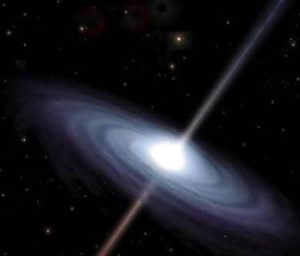
Astronomers have found a black hole at the center of a globular cluster, and the most striking feature of this black hole is that it of intermediate-mass. With this discovery, the number of known “intermediate-mass” black holes has increased to about a dozen.
In the past, most of the black holes discovered by astronomers have been characterized by mass either millions of times that of the sun or only tens of solar masses, and only a few black holes with intermediate masses have found in the universe.
The new black hole found by astronomers lies at the center of 47 Tucanae, a globular cluster in the southern sky about 16,700 light-years from Earth. The black hole has been discovered by Bülent Kiziltan, an astronomer at the Harvard-Smithsonian Center for Astrophysics (CfA), Abraham Loeb (also of CfA), and Holger Baumgardt (of Australia’s University of Queensland). According to the team, this black hole is between 1,400 and 3,700 solar masses.
“Intermediate-mass black holes should help us to understand the evolutionary connection between stellar-mass and super-massive black holes. However, the existence of intermediate-mass black holes is still uncertain, and their formation process is therefore unknown. It has long been suspected that black holes with masses 100 to 10,000 times that of the Sun should form and reside in dense stellar systems. Therefore, dedicated observational campaigns have targeted globular clusters for many decades, searching for signatures of these elusive objects. All candidate signatures appear radio-dim and do not have the X-ray to radio flux ratios required for accreting black holes,” study authors wrote in the paper.
“Here we show there is evidence for a central black hole in 47 Tucanae with a mass of solar masses when the dynamical state of the globular cluster is probed with pulsars. The existence of an intermediate-mass black hole in the center of one of the densest clusters with no detectable electromagnetic counterpart suggests that the black hole is not accreting at a sufficient rate to make it electromagnetically bright and therefore, contrary to expectations, is gas-starved. This intermediate-mass black hole might be a member of an electromagnetically invisible population of black holes that grow into supermassive black holes in galaxies.”
Black holes emit huge amounts of X-rays, which helps scientists discover them. So far, scientists have found only about a dozen midsize black-holes in the Universe, including the one found by researchers from the University of Maryland and NASA’s Goddard Space Flight Center in 2015.
“Intermediate-mass black holes have been expected [in globular clusters] for many decades,” Kiziltan told Space.com.
“But we’ve not been able to find one conclusively.”
Researchers discovered this black hole by measuring motions of pulsars within 47 Tucanae cluster. They had noticed telltale signs of a compact, massive object in the center of the cluster, and the most probable explanation for the motions was a black hole.
The detailed findings of the study have been published in Journal Nature.